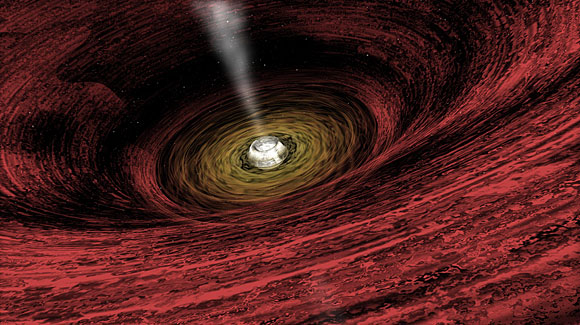Astronomers have discovered a hidden collection of growing black holes dating back to the early universe, showing, for the first time, that black holes populated the cosmos far earlier than thought.
Astrophysicists had theorized that black holes would be found at the center of galaxies very early in the universe. But when astronomers tried to detect them, by looking for X-ray radiation emitted by dust falling into a black hole, they came up empty. Matter falling in toward the black hole generates electromagnetic radiation, which can be detected in the form of X-rays. Lead author Ezequiel Treister, an astronomer at the University of Hawaii, looked for high energy X-rays using NASA’s space-based Chandra X-ray Observatory and found that at least 30%, and possibly many more, of the galaxies contained black holes, showing that the strong association between black holes and galaxies dates to the very young universe.Learn more from LA Times.
Black Holes Dating Back to Early Universe Discovered





